
- Company
- Services
- UI/UX Design Services
- Microsoft Dynamics 365
- Mobile App Development
- AI Software Development
- Web App Development
- Generative AI Development
- Digital Product Development
- Enterprise Mobility
- SaaS Application Development
- Application Integration
- White-label WP Maintenance
- ERP Software Solutions
- Software Testing
- Offshore Development Center
- Let’s Connect
- Trending
- Technology
- Industry
- Build Your Team
- Our Work
- Company
- Services
- UI/UX Design Services
- Microsoft Dynamics 365
- Mobile App Development
- AI Software Development
- Web App Development
- Generative AI Development
- Digital Product Development
- Enterprise Mobility
- SaaS Application Development
- Application Integration
- White-label WP Maintenance
- ERP Software Solutions
- Software Testing
- Offshore Development Center
- Let’s Connect
- Trending
- Technology
- Industry
- Build Your Team
- Our Work
We use cookies and similar technologies that are necessary to operate the website. Additional cookies are used to perform analysis of website usage. please read our Privacy Policy
Last Mile Delivery Software: Features, Process, Costs, Benefits
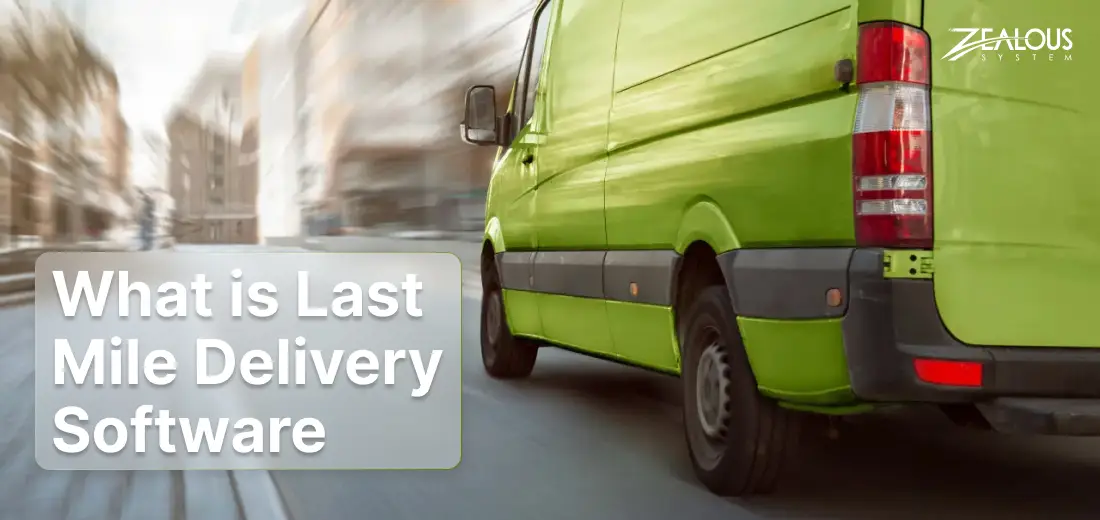
In today’s e-commerce world, getting a product from the warehouse to the customer’s doorstep is just half the battle. The real challenge lies in the “last mile,” the final leg of the journey that can make or break the delivery experience. This is where last mile delivery software development comes in, armed with tools to optimize, streamline, and revolutionize the final stretch.
Every time your eyes shine after reading the “out for delivery,” just thanks to a powerful last-mile delivery software behind it. From Amazon to Walmart, these big-shot companies rely on different last-mile software to make sure your packages reach you in a flash.
They recognize how crucial the final part of the delivery process is. Whether it’s a tech device, groceries, or your preferred meal, they aim to get it to your doorstep quickly. This is where last-mile delivery software plays a role, coordinating the delivery process to ensure a pleasant customer experience.
If you’re eager to gain a comprehensive understanding of the role played by last-mile delivery software, along with insights into its benefits, challenges, and the process of developing one, you’ve landed in the right place.
In this blog, we delve into the complex world of last-mile delivery software, exploring its significance in ensuring swift and efficient delivery of various items, be it cutting-edge tech gadgets, essential groceries, or your favorite culinary delights.
Let’s explore.
What is Last Mile Delivery Software?
Last-mile delivery software streamlines and improves the final phase of the delivery process, from the distribution center to the customer’s doorstep. It uses advanced algorithms for efficient route planning, real-time tracking, and improved communication among stakeholders. This cloud-based application aims to optimize operations, cut costs, and enhance the overall customer experience.
The Pulse of Last-Mile Delivery: Market Growth and Key Statistics
In recent years, the worldwide autonomous last-mile delivery market reached a size of USD 3.47 billion, with expectations to surge to approximately USD 29.13 billion by 2032. The forecasted growth indicates a strong compound annual growth rate (CAGR) of 23.71% between the years 2023 and 2032.
The autonomous last-mile delivery market is reshaping logistics by using technologies like drones and self-driving vehicles to efficiently transport goods in the final portion of the supply chain. This sector responds to the demand for faster, cost-effective, and eco-friendly delivery solutions, particularly in congested urban areas.
Utilizing AI, machine learning, and computer vision, these systems improve delivery efficiency, reduce costs, and minimize blunders.
How Does This Last-Mile Delivery Application Work?
The last-mile delivery application is designed to efficiently transport goods from distribution centers to the final destination, typically a customer’s doorstep. Here’s how the process begins:
- Customers initiate the delivery process by placing orders through an online platform or app, inputting delivery specifics and preferences.
- Advanced algorithms and AI dynamically optimize delivery routes, considering variables such as package attributes, destination coordinates, real-time traffic data, and delivery time restrictions.
- Autonomous vehicles, drones, or robotic systems are deployed from distribution centers, with robotic automation potentially easing the sorting and categorization of packages for efficient return.
- Equipped with cutting-edge sensors (e.g., LiDAR, cameras) and navigation systems, autonomous vehicles guide roadways autonomously, while drones follow predetermined flight paths, ensuring obstacle avoidance and compliance with traffic regulations.
- Vehicles and drones maintain seamless communication with a centralized control system, enabling real-time adjustments, route optimization, and synchronized fleet management software.
- Implementation of strong security measures, including biometric authentication and real-time tracking, guarantees the secure and tamper-proof transit of packages from the distribution center to the final destination.
- Customers receive immediate notifications, including estimated arrival times and delivery confirmations, contributing to an improved and technologically transparent delivery experience.
Why Is Last-Mile Delivery Software Important?
Last-mile delivery software development is crucial due to its essential role in overcoming the challenges of the final stage of the delivery process. This phase is critical for the overall success of the supply chain, and the last-mile software plays a key role in optimizing route planning and ensuring efficient and cost-effective deliveries.
1. Same-Day and Next-Day Delivery Demands:
With the rise of e-commerce giants offering same-day or next-day delivery options, businesses need last-mile delivery software to efficiently manage and fulfill these time-sensitive delivery commitments. This is crucial for meeting the expectations of modern consumers who value speed and convenience.
2. Peak Season Handling:
During peak seasons or special events (e.g., holidays or sales events), the volume of deliveries can significantly spike. Last-mile delivery software helps businesses handle increased demand efficiently, preventing blockages and ensuring timely deliveries even during high-demand periods.
3. Returns Management:
Efficient handling of product returns is a critical part of the last-mile delivery process. Last-mile delivery software can assist in managing and processing returns seamlessly, minimizing the impact on both customers and the business.
4. Cost Management:
Last-mile delivery software contributes to effective cost management by optimizing routes, reducing fuel consumption, and minimizing delivery delays. Businesses can analyze performance metrics and make data-driven decisions to continually improve cost-effectiveness.
5. Inventory Visibility:
Businesses with multiple warehouses or distribution centers benefit from last-mile delivery software that provides real-time visibility into inventory levels. This helps in making informed decisions, preventing stockouts, and optimizing the allocation of products based on demand.
Top Companies Leveraging The Benefits Of Last-Mile Software Development Companies
–Amazon relies heavily on last-mile delivery software to fulfill its commitment to fast and efficient deliveries. The company’s Prime service, offering same-day and next-day deliveries, necessitates sophisticated last-mile logistics to meet customer expectations.
–Uber Eats uses last-mile delivery software to optimize the delivery routes of its network of drivers. The software improves the efficiency of food deliveries by minimizing delivery times and ensuring that meals reach customers while they are still fresh.
–Instacart relies on last-mile delivery software for real-time inventory visibility and optimization of delivery routes. The software helps Instacart efficiently manage and fulfill grocery orders, ensuring timely deliveries and preventing stockouts.
Challenges in Last-Mile Logistics and How Software Addresses Them
There are various challenges linked with last-mile logistics, and it’s important to solve these problems to make sure that delivery operations are both effective and cost-efficient. Here are some of the main challenges:
1. High-Cost
High costs in last-mile logistics not only impact the profitability of logistics providers but can also result in increased prices for consumers. Finding ways to streamline operations, improve efficiency, and adopt cost-effective technologies is essential for maintaining a sustainable and competitive last-mile logistics ecosystem. Additionally, exploring partnerships and collaborative solutions within the supply chain can help distribute and minimize some of the financial burdens associated with last-mile delivery.
2. Lack of Transparency
Transparency is crucial for customer satisfaction and operational efficiency. When there’s a lack of visibility, it becomes difficult for customers to track their shipments accurately, leading to dissatisfaction. Moreover, businesses may struggle to identify inefficiencies or blockages in their delivery processes without transparent data.
3. Heavy Traffic In Urban Areas
Due to heavy traffic, urban areas can be difficult to deliver last miles because of delays, higher operating costs, and possible disruptions to delivery schedules. Customer satisfaction may suffer as a result of inefficiencies and longer delivery times caused by the congestion.
Collaboration with local authorities, efficient route planning, and real-time traffic monitoring are some of the solutions. The effects of traffic congestion can be lessened by experimenting with off-peak hours, optimizing delivery schedules, and implementing alternative delivery techniques like drones.
4. Sustainability Concerns
The environmental impact of last-mile logistics raises significant sustainability concerns. Traditional delivery methods contribute to air pollution, traffic congestion, and increased carbon emissions.
To address this, there’s a growing need for eco-friendly practices in the last-mile delivery process. Implementing sustainable transportation options, such as electric or hybrid vehicles, helps reduce the carbon footprint. Additionally, exploring alternative delivery methods like bicycle couriers or electric scooters can contribute to a greener approach.
5. Regulatory Compliance:
One major challenge in last-mile logistics is ensuring compliance with local regulations. Legal and operational success depends on following parking laws, vehicle emissions standards, and delivery time constraints. Delivery schedule delays, fines, and legal problems may arise from noncompliance.
Having a thorough awareness of local laws is essential for navigating the many regulations that exist across various regions. Logistics companies must invest in strong compliance management systems, keep up-to-date with changing legal requirements, and create efficient communication channels with relevant authorities.
What’s New in Last-Mile Delivery Software: Trends and Innovations
The last mile of delivery, the leg from a distribution center to the customer’s doorstep, is the most expensive and time-consuming part of the delivery process. This is why there has been a surge in innovation in last-mile delivery technology in recent years.
1. Same-day and on-demand delivery
Consumers are increasingly demanding faster delivery times, encouraging businesses to explore same-day and on-demand options. This often requires smaller, strategically located fulfillment centers and an innovative dispatch system. Retailers and logistics providers are leveraging advanced logistics networks and technologies to fulfill orders quickly, meeting the demand for instant gratification and improving customer satisfaction.
2. Artificial intelligence (AI) and machine learning (ML)
AI and ML play a key role in optimizing last-mile logistics by analyzing data to enhance route planning, predict delivery times, and boost operational efficiency. These technologies enable intelligent decision-making, helping companies adapt to changing delivery demands and improve the customer experience. Transforming last-mile delivery, AI and ML optimize routes, predict demand, automate tasks, and offer real-time tracking. Businesses benefit from improved efficiency, cost reduction, and enhanced customer experiences.
3. Urban warehouses and micro-fulfillment centers
Businesses are establishing urban warehouses and micro-fulfillment centers to meet the growing demand for faster delivery. These smaller facilities, strategically located near urban populations, enhance efficiency for same-day and on-demand orders. Addressing last-mile logistics challenges in urban areas, these setups enable quicker order processing, reduced delivery times, and optimized inventory management, creating a more efficient last-mile delivery ecosystem.
4. Robotics, drones, and autonomous vehicles
Last-mile delivery is being revolutionized by these technologies, which offer faster, more effective, and possibly more affordable options. Autonomous vehicles promise efficiency and lower labor costs, while drones can reach remote locations and access traffic. The integration of robotics, drones, and autonomous vehicles improves delivery precision, lowers costs, and streamlines order fulfillment all despite technological and regulatory obstacles. Particularly in locations that are harder to reach, they provide quicker, more flexible deliveries.
5. Generative AI
Generative AI works like a smart assistant for delivery planning. It uses simulations to predict and handle problems, making delivery systems strong and efficient. This technology can automate tasks, like sorting packages and planning routes. It also personalized things for customers and created specific ads.
For example, imagine a delivery company using generative AI solutions to figure out the best routes for their drivers, making sure packages get to people quickly and without any problems. It also helps them send personalized messages to customers, like special offers based on their preferences.
7. Hybrid fleet management
Hybrid fleet management combines a company’s delivery fleet with contractors and third-party providers for efficient and cost-effective scaling. It integrates different transportation modes like traditional vehicles, electric vehicles, and bicycles, offering flexibility in diverse urban areas and contributing to sustainability goals. This strategy optimizes delivery routes based on specific operational needs.
10 Key Features Of Effective Last-Mile Delivery Software
Effective last-mile delivery software plays a crucial role in the success of modern logistics operations. Here are the key features:
1. Route Optimization:
Efficient last-mile delivery software includes advanced route optimization algorithms to streamline delivery routes, minimizing time and resources.
2. Real-Time Tracking:
Providing real-time visibility allows businesses and customers to track deliveries, enhancing transparency and communication throughout the delivery process.
3. Automated Task Management:
Automation of tasks such as order processing, dispatching, and delivery confirmation helps streamline operations and reduce manual workload.
4. Scalability:
Scalable software can adapt to varying delivery volumes, ensuring flexibility to handle increased demand without compromising efficiency.
5. Integration Capabilities:
Seamless enterprise software integration with other systems, such as inventory management and order processing, enhances overall operational efficiency and reduces data entry errors.
6. Customer Communication:
Effective last-mile delivery software includes features for proactive communication with customers, providing delivery updates and estimated arrival times.
7. Data Analytics:
Utilizing data analytics tools enables businesses to gain insights into delivery performance, customer behavior, and areas for improvement, contributing to informed decision-making.
8. Mobile Accessibility:
Mobile-friendly interfaces or dedicated mobile applications enable drivers and staff to access information on the go, facilitating efficient communication and coordination.
9. Scalable Pricing Models:
The software should offer pricing models that align with the business’s growth, ensuring that costs remain reasonable as the delivery operations expand.
10.Customization Options:
Providing customization options allows businesses to tailor the software to their specific needs, ensuring a more personalized and effective solution.
How To Build Last-Mile Delivery Software?
Building effective last-mile delivery software requires careful planning and execution. Here are the five main steps:
1. Define Requirements and Scope:
Before starting on your last-mile delivery software development journey, it’s crucial to understand your target audience. Who will be using the software: drivers, dispatchers, or customers? Identifying their specific needs and pain points is crucial. Are drivers struggling with inefficient routes? Do dispatchers lack real-time visibility into delivery progress? Are customers frustrated by a lack of tracking information?
Additionally, analyzing your existing delivery processes is essential. What are the current challenges? Are deliveries slow, inefficient, or prone to errors? What are your goals for improvement? Do you aim to reduce costs, improve delivery times, or provide a better customer experience?
Finally, identify the key features and functionalities the software needs. Do you need route optimization, real-time tracking, proof of delivery, or customer communication tools? By answering these questions, you’ll lay a solid foundation for building last-mile delivery software that truly addresses your needs and optimizes your operations.
2. Choose a Development Approach:
Your last-mile delivery software is a critical tool for optimizing your operations and delivering a seamless customer experience. Choosing the right development approach is crucial for ensuring the success of your project. Here’s an overview of the three main options:
Off the shelf:
- Pros: Affordable, quick implementation, low maintenance.
- Cons: Limited customization, may not meet specific needs, scalability limitations.
Custom Development:
- Pros: Highly tailored, scalable, greater flexible.
- Cons: Expensive, time-consuming, maintenance responsibility.
Hybrid Approach:
- Pros: Combines affordability and customization, faster than full custom development.
- Cons: May require more integration effort, and potential vendor lock-in.
Consider factors such as budget, timeline, technical expertise, and specific needs when deciding on the best approach for your project.
3. Build Your Development Team:
Once you clearly understand your requirements and chosen development approach, assemble a skilled development team. Your team should ideally include
- Project Manager: Oversees the entire development process, ensuring that it stays on track, within budget, and meets the specified requirements.
- Developers: Experienced professionals skilled in the chosen development technology or framework.
- Front-end and back-end developers may be necessary depending on the complexity of your software.
- UI/UX Designers: Responsible for creating an intuitive and user-friendly interface for drivers, dispatchers, and customers.
- QA/Testers: Conduct thorough testing to identify and resolve any bugs or issues before the software is deployed.
4. Develop and Implement the Software:
For effective last-mile delivery software development, start by building a Minimum Viable Product (MVP) focused on core features. This allows for quick deployment and refinement based on user feedback. Adopt Agile development principles for speed and adaptability to changing requirements. Prioritize a secure and reliable cloud infrastructure for scalability and data protection. This strategic approach ensures a dynamic and responsive software development process tailored to the needs of last-mile delivery.
5. Launch and Continuously Improve:
Place extreme value on user training and support to ensure a smooth adoption process and to address any concerns that may arise among users. Implement strong data analysis and optimization practices to continuously monitor usage data and identify opportunities to improve the system’s performance and efficiency.
Maintain a commitment to continuous software improvement through regular updates, incorporating new features, and remaining adaptable to emerging industry trends. This comprehensive approach ensures a well-optimized and user-friendly last-mile delivery solution that effectively aligns with the changing needs of both the business and its users.
Technology Stack for Last-Mile Delivery Software Solutions
| Category | Technology |
| Backend | Programming Language: Python, Node.js, Java, Ruby Framework: Django, Express, Spring Boot, Ruby on Rails Database: PostgreSQL, MySQL, MongoDB (for scalability) |
| APIs and Integrations | Mapping and Geolocation: Google Maps, Mapbox, Here Maps Payment Gateway: Stripe, PayPal, Braintree Communication: SMS and Email APIs |
| Frontend | Framework: React, Angular, Vue.js UI/UX Design: Figma, Sketch |
| Mobile App Development | Native (if applicable): Swift (iOS), Kotlin (Android) Cross-Platform: React Native, Flutter |
| Cloud Services | Serverless Computing: AWS Lambda, Azure Functions, Google Cloud Functions |
| DevOps | Version Control: Git CI/CD: Jenkins, GitLab CI, GitHub Actions |
| Security | SSL Certificates Authentication and Authorization: OAuth 2.0, JWT |
| Analytics and Monitoring | Analytics: Google Analytics, Mixpanel Monitoring: Prometheus, Grafana, New Relic |
What is the Cost of Building Last-Mile Delivery Software?
The development cost of last-mile delivery software can vary depending on several factors. Key considerations include
Factors Affecting Last-Mile Delivery Software Cost:
- Complexity of Features: More features, like advanced routing algorithms, real-time driver tracking, and integrations with other systems, will naturally increase the cost.
- Development Team: Hiring in-house developers can be expensive, while outsourcing to freelancers or agencies might offer lower costs but potentially compromise control and quality.
- Technology Stack: The chosen programming languages, frameworks, and cloud platforms can impact the cost significantly.
- Project Scope and Duration: A simple proof-of-concept will cost less than a full-fledged, enterprise-grade solution with ongoing maintenance.
Estimated Last-Mile Delivery Software Cost Ranges:
- Basic System: $15,000-$50,000 for a basic system with core functionalities like route optimization and driver management.
- Mid-Range System: $50,000-$150,000 for a more feature-rich system with real-time tracking, customer notifications, and basic integrations.
- Enterprise-Grade System: $150,000-$300,000+ for a complex system with advanced features, scalability, and integrations with multiple platforms.
How Can Zealous Help You with Last-Mile Delivery Software?
At Zealous, we’re committed to modernizing last-mile delivery with advanced software solutions. Our experienced software development team understands the details of last-mile logistics and tailors software development to meet your specific needs. We prioritize a user-friendly design for both customers and delivery personnel.
We offer a comprehensive suite of features designed to optimize every aspect of your last-mile delivery. From advanced route optimization algorithms that save you time and fuel to real-time driver tracking and communication tools that enhance transparency and customer satisfaction. We leverage the power of artificial intelligence to analyze real-time data and provide actionable insights. We help you identify bottlenecks, predict traffic patterns, and optimize your operations continuously for constant improvement.
Our software is built with scalability in mind, allowing you to adapt and expand your delivery network seamlessly. Additionally, we prioritize data security, ensuring your customers’ information is always protected. We don’t just build software and walk away. Our dedicated team provides comprehensive support throughout the development process and beyond. We offer ongoing maintenance, updates, and training to ensure your software continues to deliver value well into the future.
Trust Zealous for a feature-rich solution including real-time tracking, dynamic route planning, and customer communication tools. Enhance your last-mile delivery operations and stay competitive with Zealous.
Conclusion
In conclusion, with its efficient, tech-driven solutions, last-mile delivery software is changing the logistics software development. The market is flourishing and businesses are taking advantage of cutting-edge technologies to meet modern consumers’ demands. High costs and concerns about sustainability are being addressed through innovations such as AI, robotics, and eco-friendly practices.
Businesses can seamlessly get around this transformative journey with Zealous as a dedicated partner. Companies that adhere to the trends and features of last-mile delivery software not only optimize their operations but also provide a better customer experience. Last-mile delivery has a promising future, and those who integrate innovation will undoubtedly lead the way in this growing and competitive industry.
We are here
Our team is always eager to know what you are looking for. Drop them a Hi!
Pranjal Mehta
Pranjal Mehta is the Managing Director of Zealous System, a leading software solutions provider. Having 10+ years of experience and clientele across the globe, he is always curious to stay ahead in the market by inculcating latest technologies and trends in Zealous.
Table of Contents
×

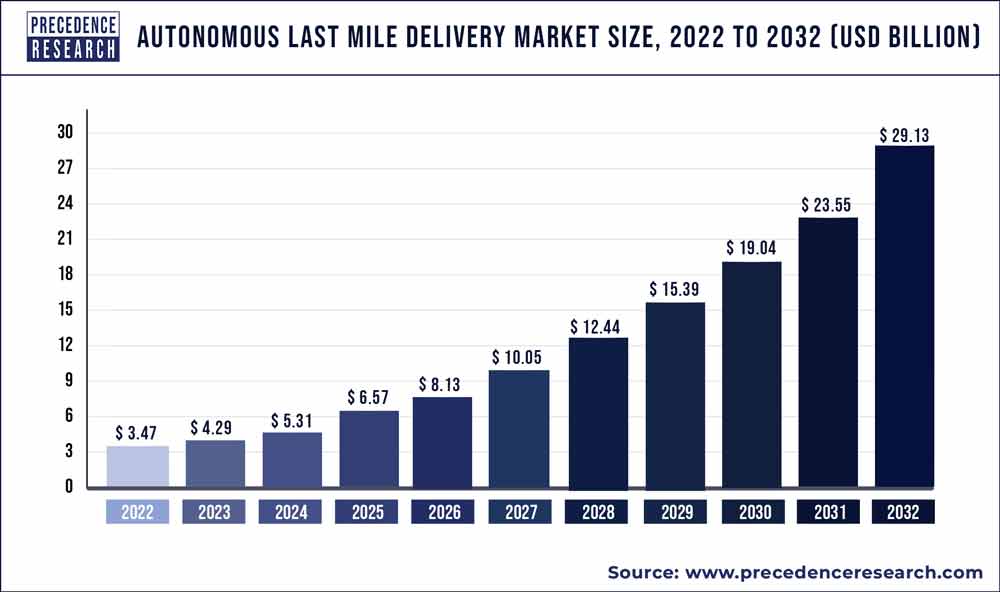
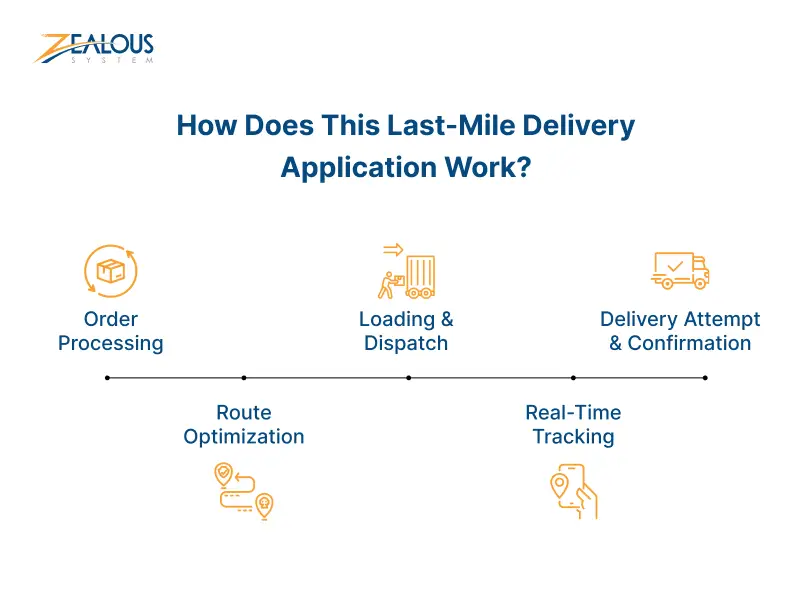
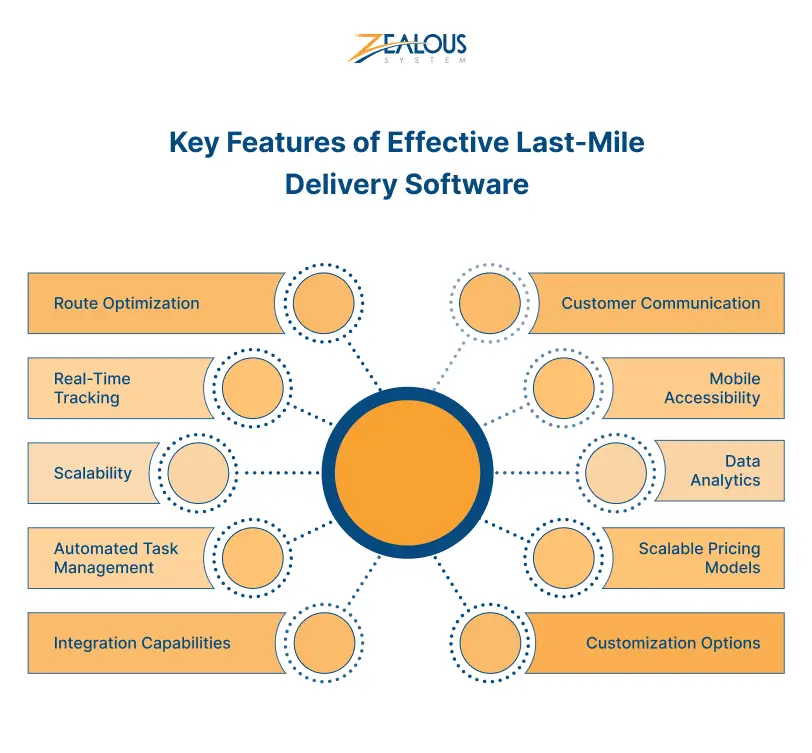
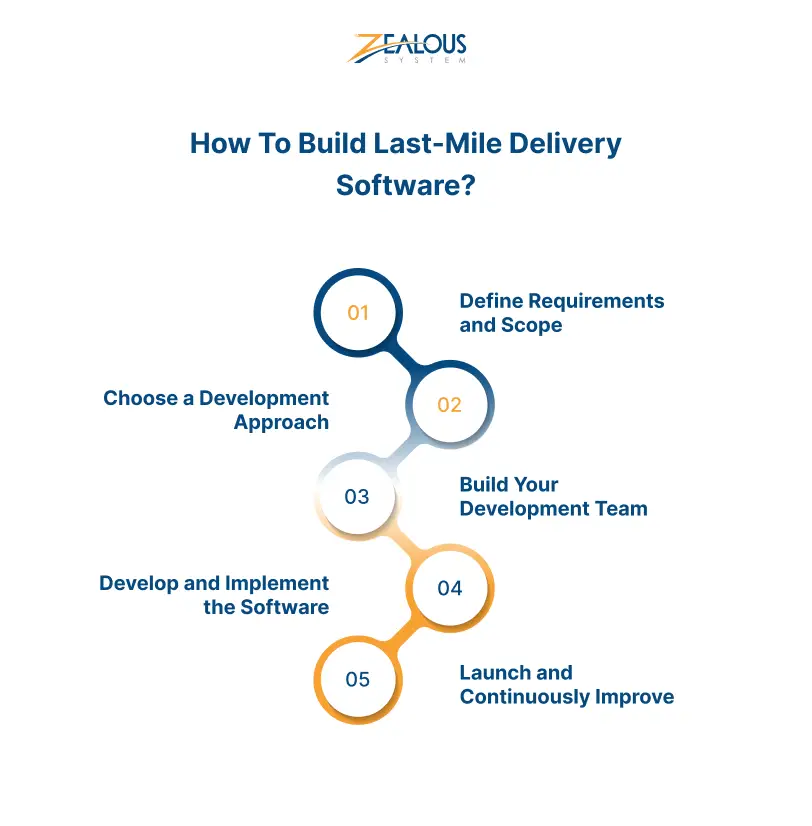
Comments